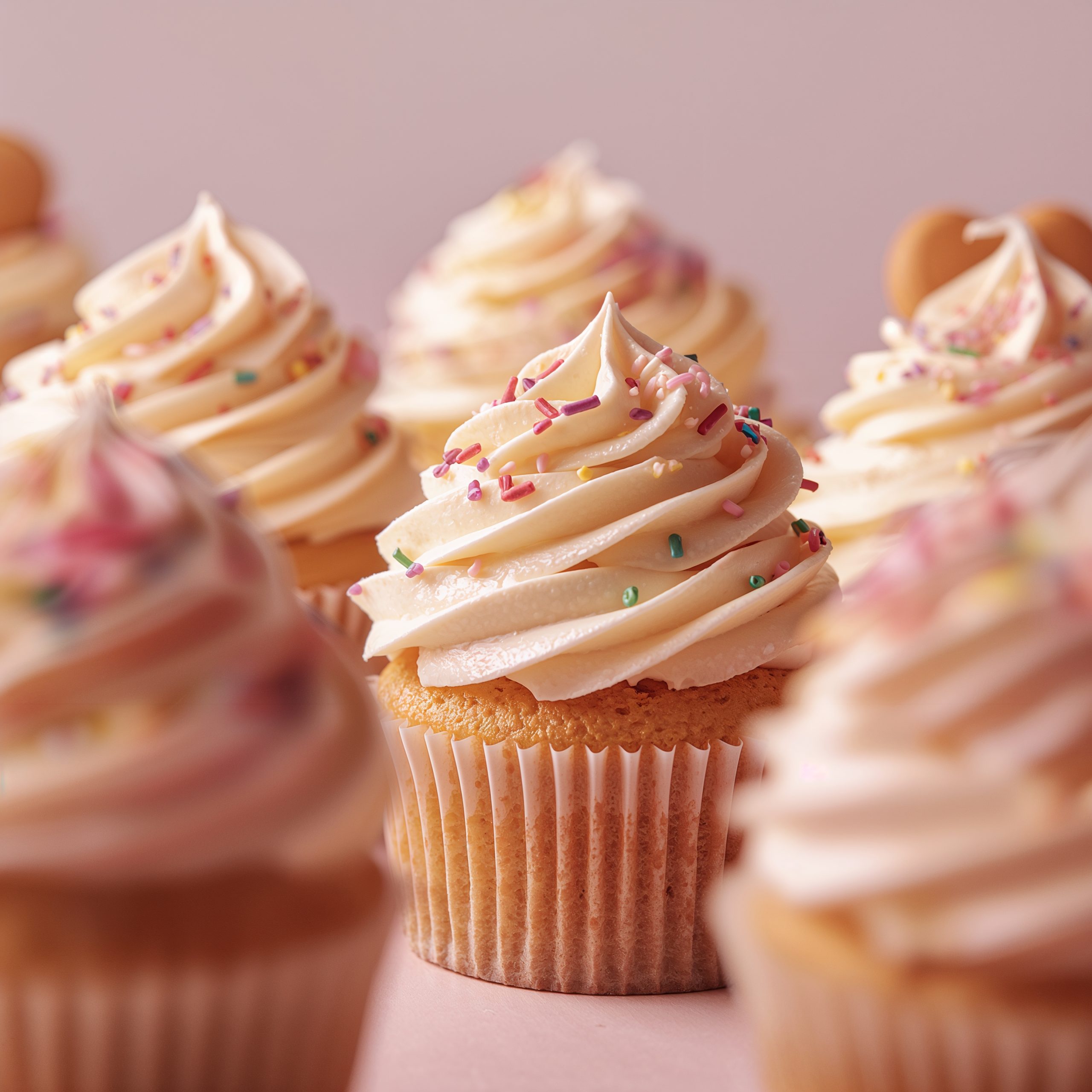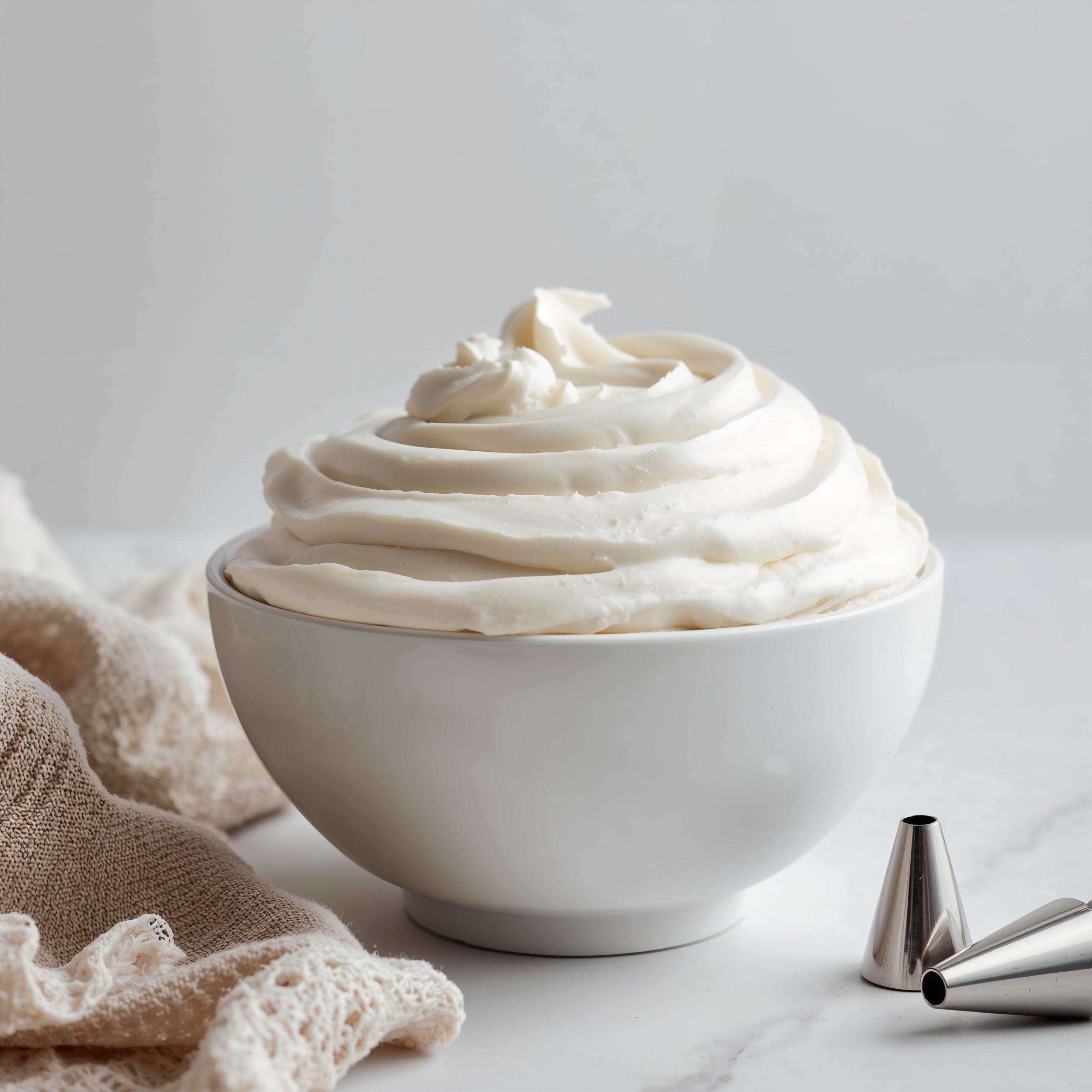Buttercream 101
Buttercream is the crown jewel of cake decorating, known for its luscious texture, sweet flavor, and ability to take on vibrant colors and intricate piping. But not all buttercreams are created equal. From the simple sweetness of American buttercream to the silky smoothness of Swiss, Italian, and Russian varieties, each type has unique characteristics that cater to different tastes, textures, and techniques.
American buttercream is perhaps the most commonly used type, especially among home bakers. It’s made by creaming together butter and powdered sugar, often with a touch of vanilla extract and a splash of milk or cream to adjust consistency. The result is a thick, sweet, and rich frosting that’s quick and easy to prepare. Its texture is slightly gritty due to the powdered sugar, and it’s known for being very sweet and dense. This buttercream is particularly popular for cupcakes, rustic cakes, and any occasion where a sweet, stable frosting is desired. Its simplicity makes it ideal for beginners, and it holds up well in warmer temperatures, making it reliable for casual celebrations. However, the intense sweetness and heavier texture may not appeal to everyone, and it lacks the smoothness of other varieties.


Swiss meringue buttercream, on the other hand, offers a more delicate experience. It is made by gently heating egg whites and granulated sugar over a double boiler until the sugar dissolves, then whipping the mixture into a glossy meringue before incorporating butter and flavoring. The resulting frosting is silky, smooth, and much less sweet than American buttercream. Its texture is light and airy, with a rich, buttery finish that’s perfect for elegant cake finishes and wedding desserts. Swiss meringue buttercream is moderately difficult to make and can be temperamental during preparation, especially if the mixture curdles or becomes too soft. While it is pretty stable, be careful of weather conditions that are too hot as it may lose some of its structor. Its refined texture and balanced flavor make it worth the effort for more polished presentations.
Italian meringue buttercream is similar in taste and texture to Swiss but is made through a different technique. This variety involves cooking a sugar syrup to a precise temperature, then slowly pouring it into whipped egg whites to form a stable meringue before adding butter. The result is an incredibly smooth, velvety, and light buttercream with a delicate sweetness. Italian meringue buttercream is more stable than Swiss, making it ideal for warm weather and intricate cake decorations. However, it’s also the most technically challenging to prepare, requiring precision and careful temperature control. When executed properly, it delivers a luxurious frosting that’s favored by professionals for its structure and sophistication.


Russian buttercream, while less widely known, offers a unique and easy alternative. It is made by whipping together butter and sweetened condensed milk, sometimes with added vanilla for flavor. This type of buttercream is rich and creamy, with a smooth texture and a caramel-like sweetness that comes from the condensed milk. It’s very quick to prepare and requires fewer ingredients than the other varieties, with no need for eggs or powdered sugar. The flavor is distinctive and pleasantly milky, making it an excellent choice for cake fillings or smooth coatings. However, Russian buttercream is softer than its counterparts and may not be ideal for detailed piping or use in hot environments.
Now that you now a little bit more about the different types of buttercreams, get out there and try it yourself. Just remember that what works for someone may not work for you!
